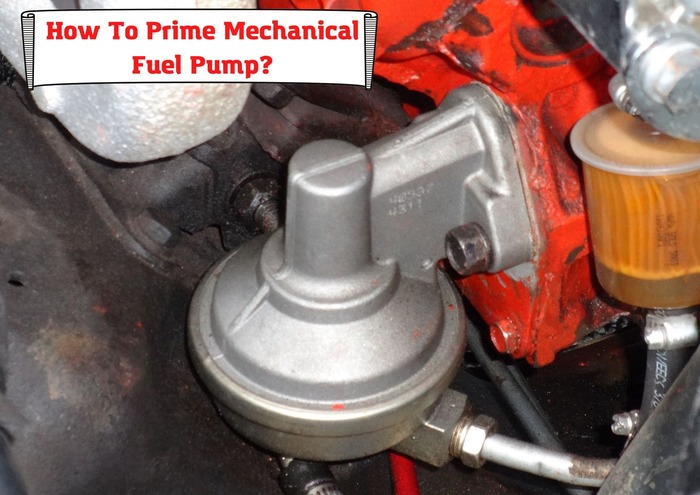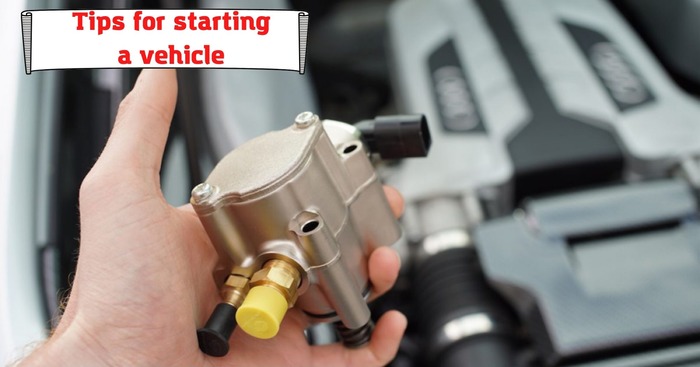
The mechanical fuel pump plays a vital function as it delivers fuel to your car's engine. It is a very reliable car component, and most people will go for ages without having any issues with it. However, there are situations when the mechanical fuel pump stops working, usually quite abruptly.
Fortunately, with proper maintenance and learning more about this essential pump, you can help avoid getting stuck while on the road.
What is the role of the mechanical fuel pump?
A constant fuel supply in sufficient quantity and at the designated pressure are all necessary for the optimal functioning of the car. Every car has a fuel pump, either mechanical or electric, that transfers fuel from the tank to the engine's fuel injection system. That way, the engine will always perform optimally under continuously changing driving conditions.
Most cars with mechanical fuel pumps and carburetors often have difficulties starting up, particularly when cars are left unused for a long time. This issue is characterized by continuous cranking when attempting to start the vehicle and difficulty starting up. In this case, the mechanical fuel pump needs to be primed to restore the optimal fuel pressure.
How to prime a mechanical fuel pump?
Priming a mechanical fuel pump means filling fuel into the lines that run between the engine and the tank. The priming occurs within seconds without any issues on a modern fuel-injected vehicle with an electric fuel pump. However, it is different with a car with a carburetor and mechanical fuel pump, particularly if it has been sitting for a long time.
Here are the simple instructions to follow when you need to prime a mechanical fuel pump:
- Open the hood of your car and locate the mechanical fuel pump.
- Remove the pipe linking the mechanical fuel pump to the carburetor. Some cars require removing a simple hose fastener, while others may need a wrench to remove the rubber pipes.
- Place some fabric rags at one side of the fuel line to catch any leakage from the open pipe.
- Spray starting fluid to the carburetor and then have someone else turn on the car by switching on the ignition.
- Ensure to keep your distance while the engine runs for at least five seconds before stopping again.
- Repeat the spraying procedure a few times until the fuel starts wetting the fabric rag placed on the fuel line.
- Finally, you can reconnect the fuel line back to the car's carburetor once the priming is complete
Ensure that the car's fuel tank has an adequate amount of fuel before you start priming your mechanical fuel pump. In addition, Inspect the fuel lines and check for potential leaks since those leaks can potentially draw unwanted air, which prevents the ideal vacuum for priming.
Signs of a bad mechanical fuel pump
Most mechanical fuel pumps develop issues due to rust, debris, and dirt inside the tank. The most common contributor is rust, mainly when dealing with high-mileage or older cars with steel gas tanks.
Here are a few signs you may need to consider replacing your mechanical fuel pump:
- Noisy fuel tank
Damaged fuel pumps tend to make a whiny loud sound. Your pump can also produce this noise when the car doesn't have enough fuel or uses contaminated fuel. A typical mechanical fuel pump produces a low humming noise, and thus, loud whining shows there's an issue.
- Hard starts
If a car's fuel pump does not have enough power to transport gas from the fuel tank into the engine, you will likely experience difficulties in starting and using your car. A damaged mechanical fuel pump does not produce enough pressure, thus depriving the engine of the needed gas.
- Sputtering engine
The work of the fuel pump does not stop once the car starts, as it is also necessary for pumping fuel to match the speed. Hence, if a car's mechanical pump cannot produce a reliable stream of fuel when driving at high speed, then the engine will likely sputter, and the vehicle will threaten to stop or stall.
- Loss of power
If your car tends to lose power every time you add more cargo or when driving on steep areas, the mechanical fuel pump might be the cause. Like driving at high speeds, your car's engine needs more fuel to work under stress. You will likely lose power when the pump is not functioning correctly.
- Engine stall
If the engine is not getting the required fuel from the mechanical pump, it will likely stall. In addition, a worn-out pump motor can get extremely hot, which will overheat the engine.
- Power surges
Most of the situations covered above have to do with the engine is not getting adequate gas. However, the mechanical pump can also push excess fuel towards the engine, resulting in power surges like speed spikes that negatively affect your overall handling and driving experience.
- Reduced fuel efficiency
If your mechanical fuel pump gets damaged and pushes too much gas to the engine, then you will burn a lot more fuel than normal. That means doing more refueling trips and poor fuel efficiency in general, which could be most costly over the long timer.
- Start-up issues
Finally, your car may develop start-up issues if the mechanical fuel pump does not work. That is because it is necessary for getting your vehicle started by delivering fuel to the engine's combustion chamber.
Tips for starting a vehicle with a bad mechanical fuel pump

It is strongly recommended that you take your car for a proper diagnosis and repair at your mechanic to resolve the start-up issue completely. When dealing with a faulty or inadequate mechanical fuel pump, the most appropriate solution is doing a complete replacement. That is because using a faulty one can cause further damage to the engine, resulting in high repair costs.
That said, if you are stuck on the road, there are a few temporary fixes you can try out to avoid stalling and complete your journey. Read to discover some quick life hacks while dealing with a bad mechanical fuel pump on the road.
Use a fuel pressure test kit
Fuel pressure test kits offer a convenient way to easily and quickly locate any malfunctioning component in your car's fuel system. Once connected to the engine, the fuel pressure gauge accurately shows whether the mechanical pump delivers its optimally rated pressure output. If the fuel pressure test kit shows a deficiency in the required pressure, you must prime the fuel manually, as shown above, to start the car to resume your trip.
Warm up the car
Carbureted cars can encounter start-up issues if you do not correctly warm them up before usage. The mechanical fuel pump in these cars will reset itself if it does not have the necessary heat and pressure.
Here are the steps required to warm up your car:
- Switch the ignition key to on and then push the accelerator pedal slowly for at least three to five times
- Take your foot off the throttle after a few seconds and now crank the engine to start it up
- Allow the engine to idle for around three minutes
- It is essential to maintain the fast idle to avoid stalling. Put your vehicle in gear after priming and then drive away
Tips for maintaining a mechanical fuel pump
It would help if you thoroughly cleaned all the parts of your mechanical fuel pump using a paintbrush and clean petrol. If possible, consider replacing the valves, top gasket, mounting gaskets, oil seal, and diaphragm regularly. These parts are often supplied together as part of a pump refurbishment kit. Remember, it is better to renew all aspects of your mechanical pump or do a total replacement for better results.
Here are some practical tips to help you get the most out of your mechanical fuel pump and avoid issues while driving:
- Ensure you have enough fuel before priming to avoid damaging the mechanical fuel pump
- Always use high-quality fuel from reputable brand names to avoid spoiling your mechanical fuel pump with contaminated gas
- Avoid getting fuel when the gas station is also being refilled since all the various deposits and dirt are being stirred up underground, and they may enter your fuel tank.
- Make sure to keep the fuel tank at least a quarter full or more if possible.
- Run regular maintenance for the entire fuel system of your car, including the pump, filters, and fuel lines.
Conclusion
Mechanical fuel pumps are generally reliable, but they often encounter various problems such as low fuel pressure, fuel system leakages, and many others. However, most of these issues can be quickly resolved by priming the fuel pump to restore the optimal pressure and fuel capacity. The process of priming is relatively straightforward. Remember to seek professional help from a mechanic if you suspect your mechanical fuel pump is not working correctly.
About the authors
The CarAraC research team is composed of seasoned auto mechanics and automotive industry professionals, including individuals with advanced degrees and certifications in their field. Our team members boast prestigious credentials, reflecting their extensive knowledge and skills. These qualifications include: IMI: Institute of the Motor Industry, ASE-Certified Master Automobile Technicians; Coventry University, Graduate of MA in Automotive Journalism; Politecnico di Torino, Italy, MS Automotive Engineering; Ss. Cyril and Methodius University in Skopje, Mechanical University in Skopje; TOC Automotive College; DHA Suffa University, Department of Mechanical Engineering






Add comment